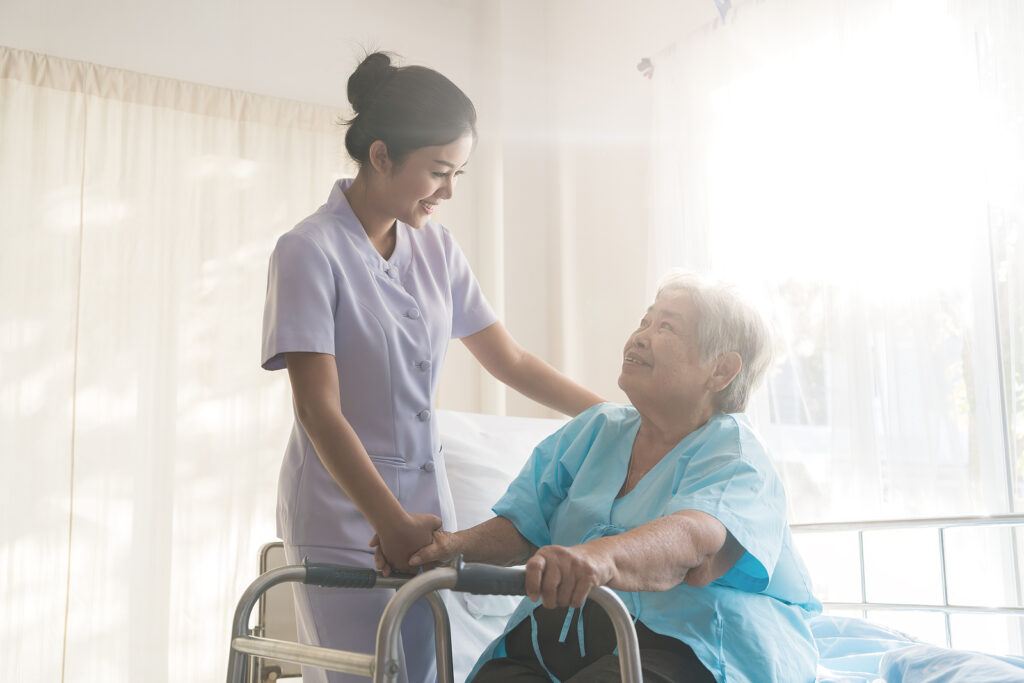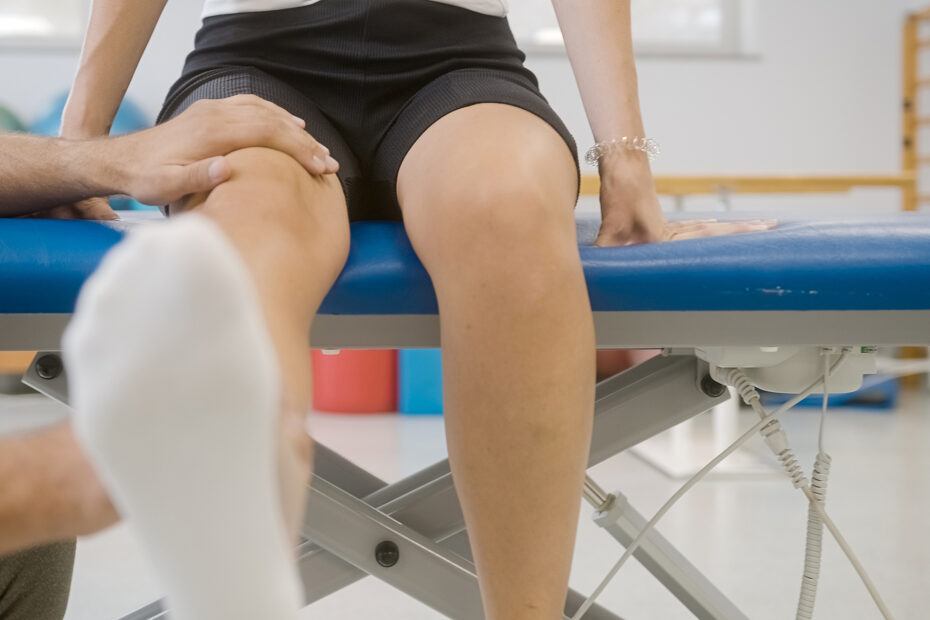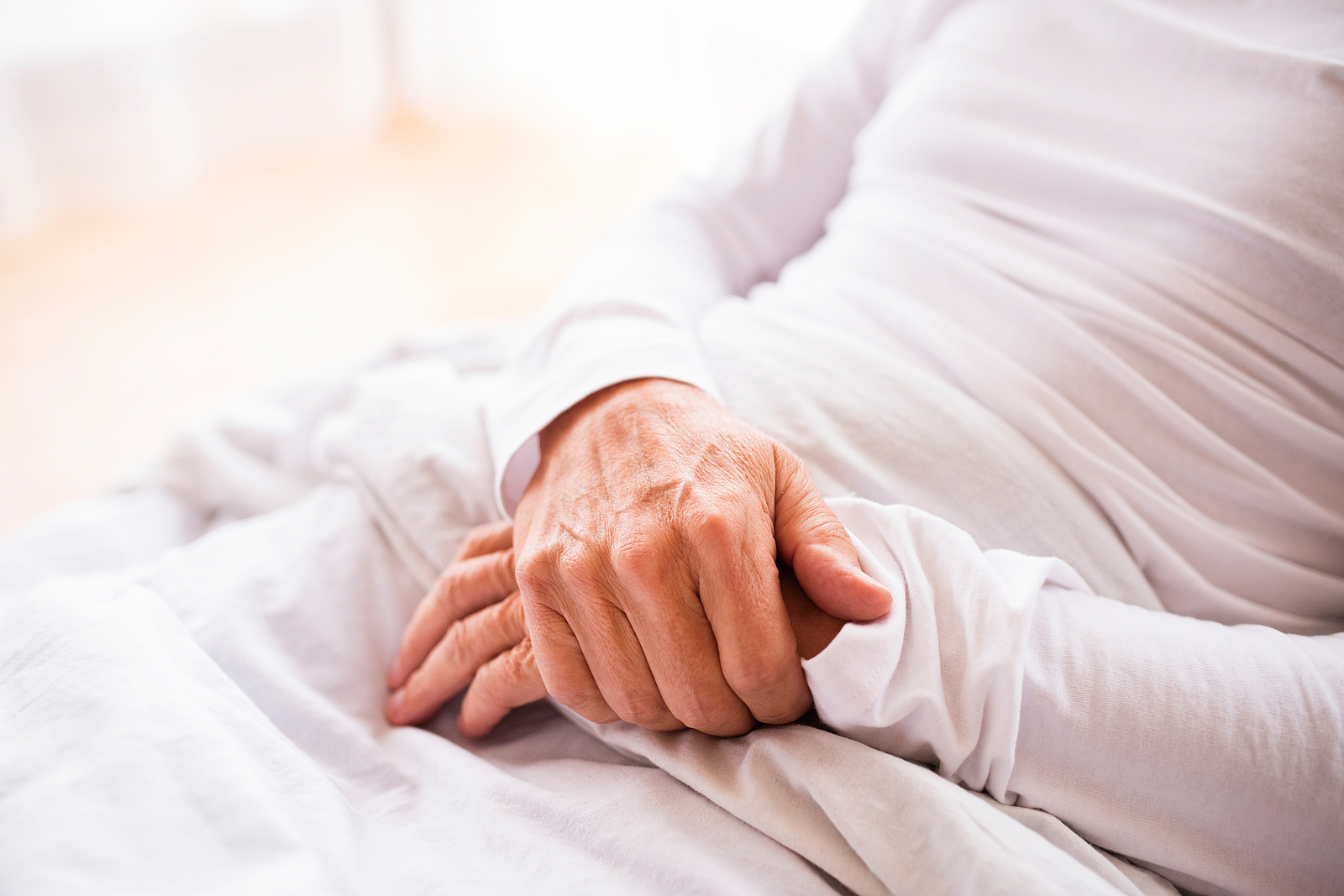A lot of stuff changes as we age, but one of the most disappointing is the loss of strength that so many seniors experience.
And this age-related weakness is one of the most debilitating because it can make it harder for seniors to do everyday activities a lot of us take for granted.
Simple tasks like standing from a chair, getting out of bed, climbing stairs, or maybe even walking across the room can become daunting.
The good news though, is that there’s something we can do to preserve our strength – it’s called exercise.
Traditional standing exercises are great for improving strength, but they may not be suitable for everyone, especially those with limited mobility or balance concerns.
Fortunately, seated leg exercises offer a safe alternative to help build and maintain leg strength without the need to stand or strain.
In this post, we’ll discuss the best seated leg strengthening exercises for seniors that can be done from the comfort of a chair.
We’ll also provide a few additional tips and strategies to make sure you get the most out of your workouts.
Why Leg Strength Is Important for Seniors
This might sound like a pretty obvious one, but I figured we might as well cover all our bases here.
Strengthening your legs offers a wide range of benefits for folks of all ages, but it’s particularly true for seniors.
Here are just a few reasons why maintaining leg strength is important:
- Improved Mobility: Strong legs help you move more freely and confidently, whether it’s walking around the house or taking a stroll outdoors.
- Better Balance and Stability: Leg strength is key to maintaining balance, which reduces the risk of falls, a major concern for seniors.
- Increased Independence: Simple tasks like standing up from a chair or getting out of bed become easier when you have strong leg muscles.
- Pain Management: Strengthening the muscles around your joints can help alleviate discomfort from arthritis, knee pain, or other age-related issues.
Long-story-short, being strong makes everything a little bit easier – regardless of your situation, it’s unlikely you won’t benefit from having stronger legs.
5 Best Seated Leg Strengthening Exercises for Seniors
Here are some of the best seated exercises to help you strengthen your legs safely and effectively.
1. Sit-Stand Transfer
Ok, so technically, you have to stand up for this exercise, but you do start from a seated position, so I think it still counts.
Plus, it’s such a great exercise for seniors, I had to include it.
This is basically a safe way to perform squats, the top exercise when it comes to strengthening just about every muscle from your waste down.
Standing up from a chair is also a functional activity we all need to do anyway, so this is great practice for making this transfer more efficient.
- While sitting in a comfortable seat, scoot to the edge and plant your feet flat on the ground, just wider than shoulder-width apart
- Lean forward and initiate the movement by pushing your feet down through the floor
- As you stand, squeeze your butt together and stand tall with good posture
- Slowly return back to a sitting position
- Repeat for sets of 5-10
You can progress this exercise by increasing the number of reps, starting from a lower seat height, or not using your hands to help stand up.
Check out this YouTube video for a good demonstration.
2. Seated Knee Extensions
Knee extensions are a simple and effective way to strengthen your quadriceps, the muscles in the front of your thighs.
This exercise can also be used to warm up stiff knees before standing and walking.
- Sit tall in a sturdy chair with your feet flat on the floor
- Slowly lift your right leg, extending it straight in front of you
- Hold for a few seconds, then lower it back down and repeat with your left leg
- Perform 2-3 sets of 10-15 repetitions on each side
You can make this exercise more challenging by adding ankle weights or using a resistance band.
Check out this YouTube video to see a demonstration.

3. Seated Marching
Seated marching helps to engage your hip flexors, a strong muscle group that’s important for a lot of functional tasks and which is also a powerful core stabilizer.
FYI, having strong hip flexors can help with tasks like getting in/out of bed, clearing a step, and even walking.
- Sit up straight in your chair with your feet flat on the floor
- Lift your right knee as high as you comfortably can, as if you’re marching, then lower it back down
- Repeat with your left leg
- Alternate legs for 10-15 repetitions on each side
For added difficulty, try marching with your back unsupported or adding ankle weights.
Check out this YouTube video for a demonstration.
4. Clamshells with Resistance Band
As you might’ve guessed, you need a resistance band to perform this one, but it’s a great exercise to strengthen the muscles on the outside of your hip.
If you don’t have a resistance band, you could still try this exercise for the range of motion benefit or use it as a warm up before standing.
- Sit on the edge of your chair with your back straight, feet on the floor, with feet close together
- Wrap resistance band up above your knees
- While keeping your feet together, open your knees apart, stretching the resistance band
- Hold for a few seconds and then slowly return to the starting position
- Repeat for 2-3 sets of 10-15 reps
You can progress by using harder resistance bands, adding reps, or both.
Check out this YouTube video for a demonstration.
5. Seated Hip Abduction
This is another good exercise to help strengthen the muscles on the outside of your hips (hip abductors).
FYI, these muscles are important for stabilizing your pelvis as you walk, so improving their strength can improve stability while walking.
- Sit with your feet flat on the floor and your back straight
- Straighten your right knee and while keeping it straight, slide it out to the side and then return to your starting position
- Repeat for 10-15 reps and then repeat on the other side
- Perform 2-3 for each leg
You can progress this exercise by adding reps or adding resistance with an ankle weight or resistance band (you can make it easier by keeping your knee bent).
Check out this YouTube video for a demonstration.

Why Do Seniors Tend to Lose Muscle Strength?
As we age, it’s common for muscle strength to decline, a process known as sarcopenia.
Sarcopenia is the gradual loss of muscle mass and function that often begins in our 30s but accelerates as we get older, particularly after the age of 60.
There are several other reasons why seniors experience this decline in muscle strength, including changes in metabolism, activity levels, and overall health.
Decreased Physical Activity
One of the main reasons seniors lose muscle strength is reduced physical activity.
As people age, they often become less active due to a variety of factors such as joint pain, chronic illness, or simply a more sedentary lifestyle.
This lack of movement contributes to muscle weakening, as muscles that aren’t used regularly tend to atrophy, or shrink in size and strength.
Changes in Metabolism
Aging brings changes to the body’s metabolism and hormonal balance, both of which play significant roles in muscle health.
Levels of hormones like testosterone and growth hormone, which are important for muscle growth and maintenance, tend to decline with age.
As a result, the body becomes less efficient at building and maintaining muscle mass.
Nutritional Deficiencies
Proper nutrition is important for muscle health and unfortunately, many seniors don’t get enough of the nutrients needed to maintain muscle strength.
Protein intake, in particular, is essential for building and repairing muscle tissue.
Seniors may eat less protein due to reduced appetite, dental issues, or changes in taste preferences.
Deficiencies in vitamins and minerals, such as vitamin D and calcium, can also contribute to muscle weakening.
Chronic Health Conditions
Many seniors deal with chronic health conditions like arthritis, diabetes, and heart disease, which can limit physical activity and lead to muscle loss.
Some conditions, such as osteoporosis, can make it painful or difficult to engage in weight-bearing exercises that are important for muscle maintenance.
Additionally, long-term use of certain medications may interfere with the body’s ability to maintain muscle strength.
Neurological Decline
As we age, changes in the nervous system can impact muscle strength as well.
The brain sends signals to the muscles via the nervous system to initiate movement and strength.
However, with age, the efficiency of this signaling can decline, which leads to weaker muscle contractions and slower reaction times.
Dementia can also be a big barrier to exercising and staying active, thus leading to increased weakness.
Safety Tips for Seated Exercises
While seated leg exercises are generally safe, it’s important to follow these precautions to ensure you perform them safely:
- Start Slowly: If you’re new to exercising or haven’t been active in a while, start with fewer repetitions and gradually increase as you build strength.
- Use Proper Posture: Sit up straight in your chair, with your feet flat on the floor and your back supported. Avoid slouching or leaning forward.
- Listen to Your Body: If any exercise causes pain or discomfort, stop immediately. Modify the movement or consult with a healthcare professional if necessary.
- Consult with Your Doctor: Always check with your doctor before starting a new exercise program, especially if you have any pre-existing conditions like arthritis or joint pain.
Final Thoughts
While age-related muscle loss is a natural process, it’s not inevitable.
Seniors can significantly slow down this loss and even regain strength by engaging in regular strength-building exercises like those mentioned in this article.
Eating a balanced, protein-rich diet and staying physically active are key factors in maintaining muscle health well into the later years of life.
By making exercise and nutrition a priority, seniors can preserve their muscle strength, reduce the risk of falls and injuries, and maintain their independence longer.
And seated leg strengthening exercises can offer seniors a safe and effective way to build lower body strength.
Oh, one last thing – feel free to adjust the rep/set counts mentioned above as needed to meet your needs.
Ok, I think that about does it.
I hope you found this guide helpful and if you have any questions or comments, please leave ’em below.



